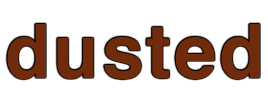|
|
 |
Dusted Reviews
Artist: Mulatu Astatke Album: Mulatu Steps Ahead Label: Strut Review date: Mar. 25, 2010 |

|
|
|
 |
Implicit in the title Mulatu Steps Ahead is the notion that vibraphonist and composer Mulatu Astatke is progressing, not resting on his laurels. Now in his 60s, he’s riding a wave of affection for music that he made 35 years ago, which was first revived by a volume of the Ethiopiques series (http://en.wikipedia.org/wiki/Ethiopiques) and then popularized by appearing in the film Broken Flowers. It would be easy for him to coast, but although he does revisit old material and methods on this record, it doesn’t sound like anything else in his discography.
Born in 1943, Astatke left Ethiopia when he was a teen to study in the UK, where he was first smitten by the modern jazz of Joe Harriott and Tubby Hayes. He subsequently lived in the USA, where he played in Latin bands, and during his sojourn abroad Astatke conceived a synthesis of jazz and Ethiopian music. He moved back to his homeland just in time for the brief flowering of Ethiopian pop music documented by Ethiopiques, and during that time he also perfected his own hybrid style, although it never knocked out audiences the way his productions for singers like the late Tlahoun Gessesse (a.k.a. Tilahun Gessesse) did. With its whomping beats and electric guitars and keyboards, Inspiration Information 3, the record he made in 2008 with the Heliocentrics, offered a muscled-up version of the old Ethio-jazz sound for hip-hop-trained ears.
Mulatu Steps Ahead was made mostly with the Either/Orchestra and it emphasizes the jazz side of Astatke’s music. Instead of the sturdy R&B grooves of vintage Ethio-jazz, Astatke and his mostly American ensemble play acoustically accomplished rhythms with a pronounced sense of swing. “Radcliffe,” named for the college where Astatke enjoyed a residency a while back, steps most deliberately, with the forward motion mostly coming from a muted trumpet wreathed in swirls of piano, Gil Evans-like horn charts, and Astatke’s own vibraphone. The next tune, “Green Africa,” unveils a more pan-African side to Astatke’s music. While it does feature traditional Ethiopian stringed instruments, there’s also a West African balafon and a bass line that feels quite Moroccan.
When Astatke looks back, he looks away from Ethiopia as often as not. “The Way To Nice,” which features a few Heliocentrics including the superb trumpeter Byron Wallen, appropriates a John Barry theme to set a cool James Bond vibe. And “I Faram Gami I Faram,” a tune 44 years ago in New York, sets Amharic words to an unabashedly Nuyorican rhythm. Another reclaimed tune, “Mulatu’s Mood,” furthers the Pan-African vibe with a lilting Malian kora, an instrument that has as much to do Ethiopian culture as the Celtic harp has to do with Bulgarian music. And he uses two traditional Ethiopian melodies as frameworks for repeating horn figures that feel more like American minimalism than Ethio-jazz. The individual elements on Mulatu Steps Ahead often feel well aged, but the way Astatke has put them together takes them out of time. Instead they represent the latest progressive step of a singular talent.
By Bill Meyer
|







